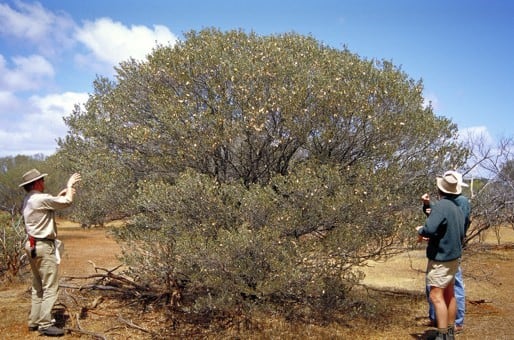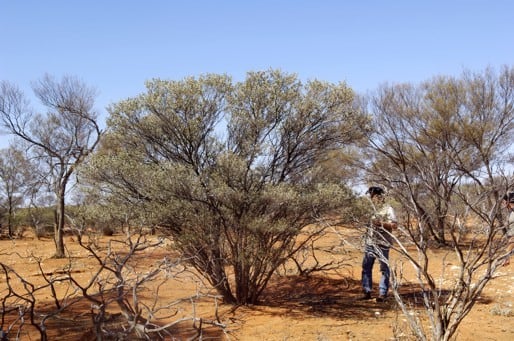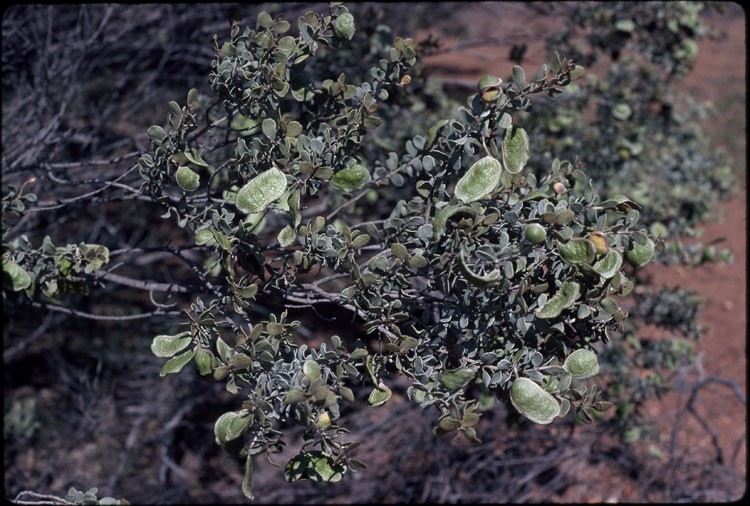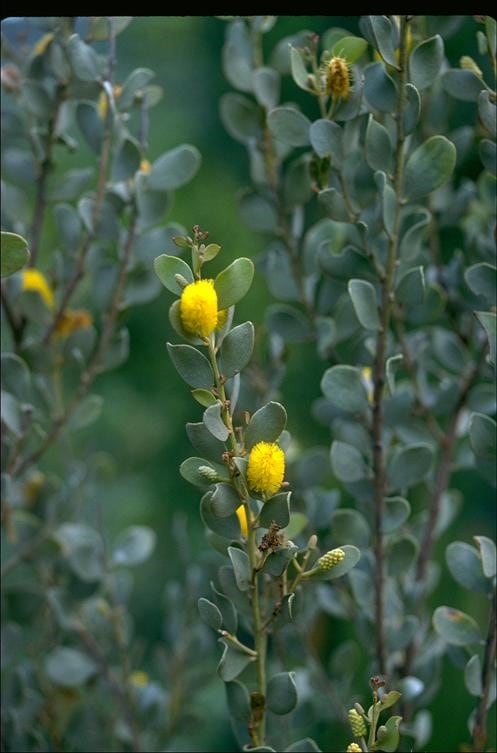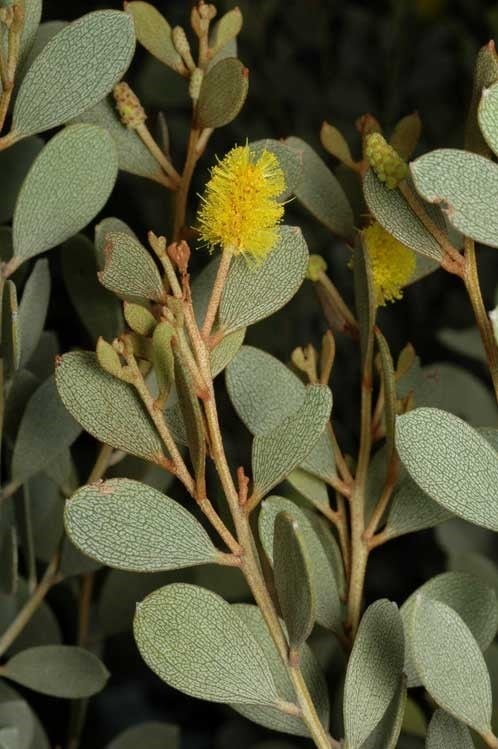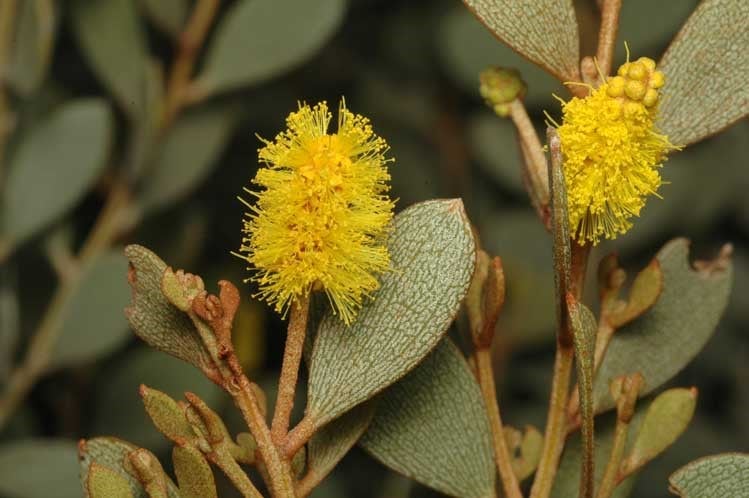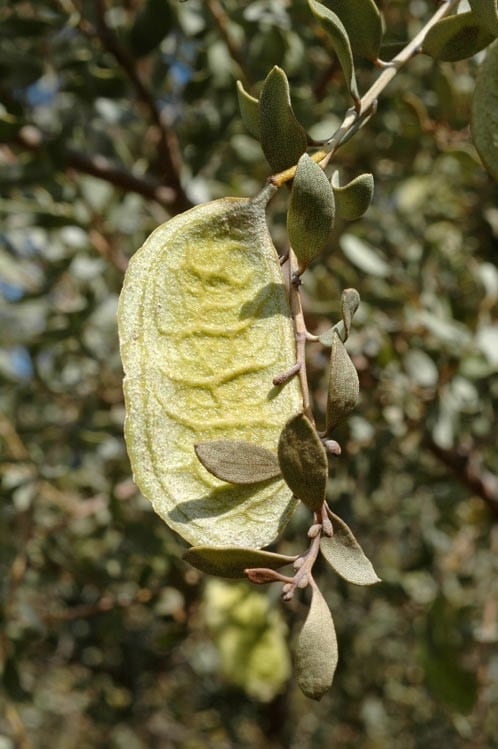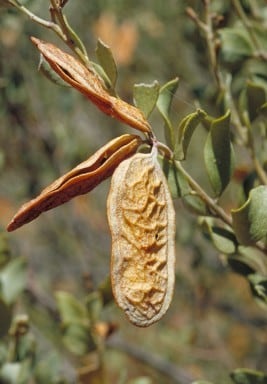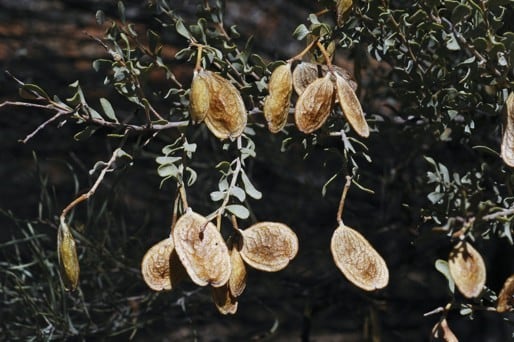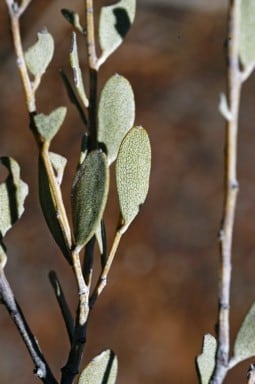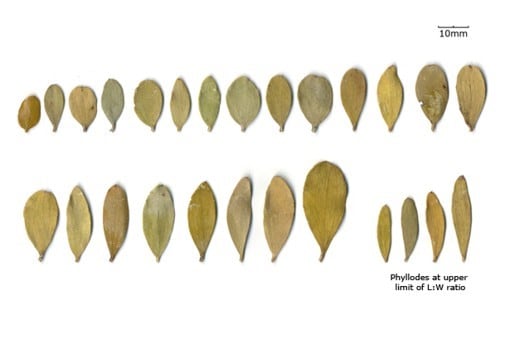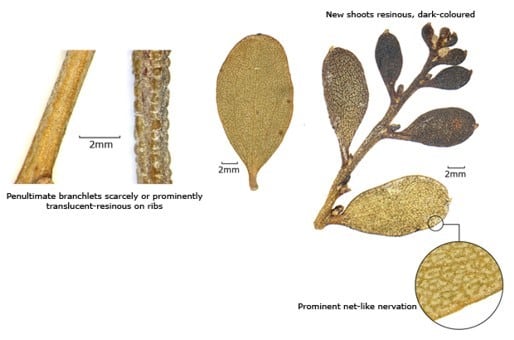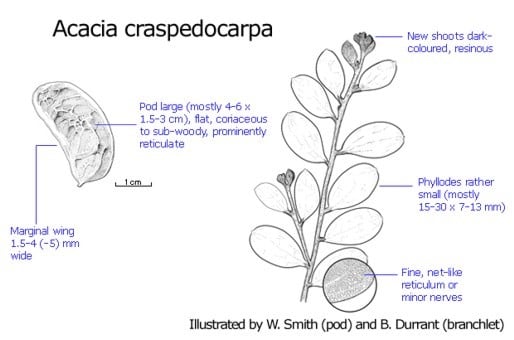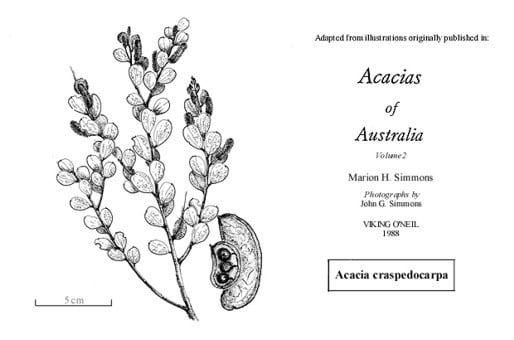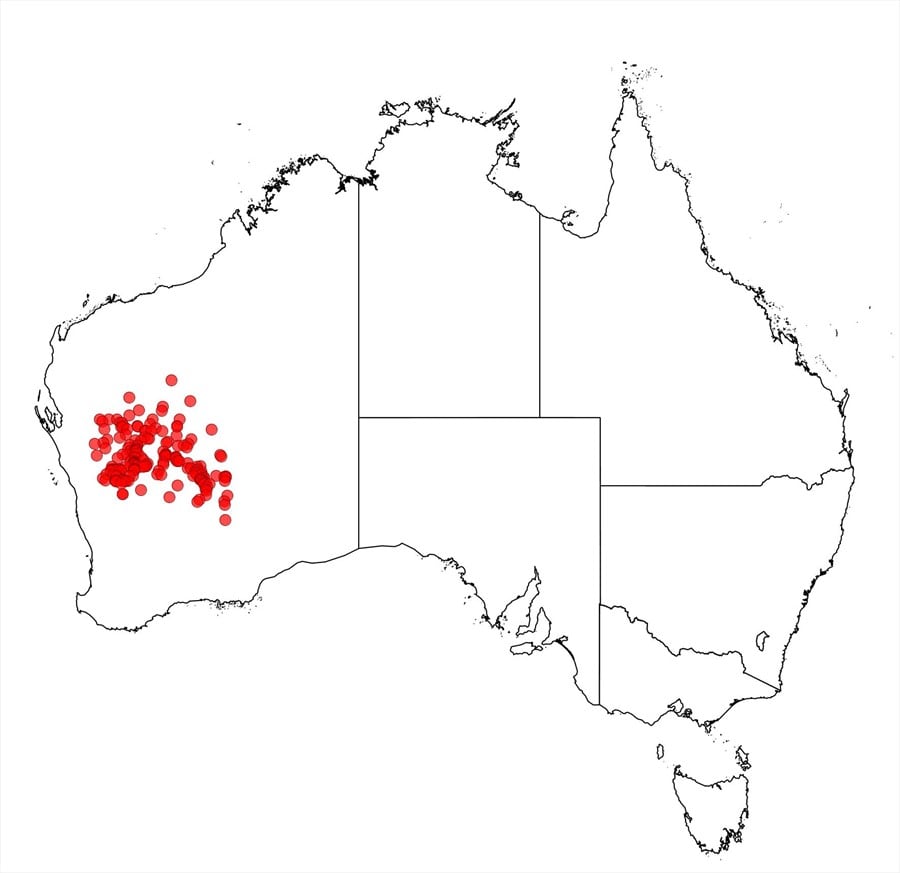Acacia craspedocarpa F.Muell.
WATTLE
Acacias of Australia
Common Name
Hop Mulga
Family
Fabaceae
Distribution
Common in south-central W.A. where it occurs in an area bounded by Yalgoo and Byro Stn (c. 260 km N of Yalgoo) in the west and Wiluna, Laverton and near Kalgoorlie in the east.
Description
Rounded or obconic, dense shrub 1–4 m high and about the same across, occasionally tree to c. 5 m. Branchlets often resin-ribbed at extremities, the resin translucent; new shoots resinous, dark brown to black. Phyllodes elliptic to oblong-elliptic, obovate or occasionally orbicular, (1–) 1.5–3 (–4) cm long, 7–13 (–18) mm wide, rounded at tip, mucronulate, thick; with 1–3 longitudinal nerves and a fine reticulum between them; nerves often capped with greyish resin. Inflorescences single in axils; peduncles (4–) 6–15 (–20) mm long; spikes 7–20 mm long. Flowers 5-merous; sepals oblong, c.1 mm long, stout, free; corolla c. 2 mm long. Pods not stipitate, flat, straight, massive, 4–6 (–7.5) cm long, 1.5–3 cm wide, including prominent wings 1.5–4 (–5) mm wide, thickly coriaceous to sub-woody, indehiscent, yellowish to light brown, prominently reticulately nerved, glabrous, usually resinous, dehiscent. Seeds transverse, ±orbicular, 8.5–10.5 8 mm long, 7–9 mm wide, flattened; aril small, terminal, cupular, cream or pale yellow.
Habitat
Normally grows in and along watercourses on loamy or clayey soils, sometimes forming thickets.
Specimens
W.A.: Annean, c. 50 miles [80 km] NE of Cue, S.L.Everist 9149 (BRI); 3 miles [5 km] N of Mt Magnet towards Cue, B.R.Maslin 4559 (BRI, PERTH); 10 km NW of Albion Downs HS, R.J.Chinnock 972 (AD, PERTH).
Notes
Phyllodes of plants considered as typical A. craspedocarpa are prominently reticulate and have l: w = 1–3 (–4). Throughout the range of the species are plants with a similar facies to that of A. craspedocarpa except their phyllodes are more elongated (l:w commonly above 4) and possess relatively few anastomosing nerves. These entities are regarded by B.R.Maslin & J.E.Reid, Nuytsia 22(4): 204 (2012), as suspect hybrids or intergrades involving A. craspedocarpa; further study of this matter is required. Two specimens, A.W. Humphries M 31 and M. Kerkhoff s.n., cited by L.Pedley, Fl. Austral. 11B: 322 (2001), under A. aneura var. fuliginea (=A. fuscaneura) belong to this A. craspedocarpa hybrid/intergrade complex. Additional to the foregoing, hybrids sometimes occur between A. craspedocarpa and A. ramulosa var. ramulosa, e.g. B.R.Maslin & J.E.Reid BRM 9734 from between Sandstone and Paynes Find, and with A. macraneura, e.g. B.R.Maslin et al. BRM 7897 from Boogardie Stn near Mt Magnet.
Acacia craspedocarpa is a member of the ‘A. aneura group’ and is readily recognized by its massive, winged pods and especially by the distinctively reticulate nervature of its phyllodes. The species is sometimes confused with A. mulganeura which has phyllodes of a similar shape and size, but in that species the phyllode nerves are all parallel. The Winnecke specimen from ‘near Stuarts Range’ that was provisionally referred to A. craspedocarpa by F.Mueller in the original description of the species is most likely A. mulganeura.
FOA Reference
Data derived from Flora of Australia Volumes 11A (2001), 11B (2001) and 12 (1998), products of ABRS, ©Commonwealth of Australia
Author
L.Pedley
Revised by B.R.Maslin
This identification key and fact sheets are available as a mobile application:
URL: https://apps.lucidcentral.org/wattle/
© Copyright 2018. All rights reserved.
